The development of Soviet rocket artillery in the first period of World War II
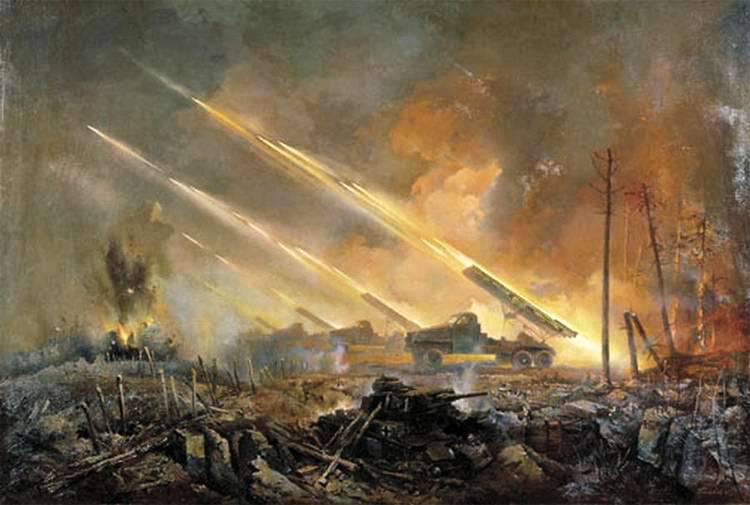
The first experimental samples of rockets (RS) and launchers for them, as well as jet weapons for the aircraft were developed and manufactured in our country before the start of World War II. However, they were in the process of polygon and military tests. The organization of mass production of this weapons, the creation and use of units and subunits of rocket artillery had to be dealt with under the most difficult conditions of the first period of the war. The resolution of the USSR Council of People's Commissars on the serial production of jet weapons was adopted on 21 on June 1941 of the year, that is, one day before the start of the war. Subsequent resolutions of the State Defense Committee gave personal responsibility for the production of RSs to the People's Commissar of Ammunition B.L. Vannikova, and for the production of military installations - on the People's Commissar of mortar weapons PI. Parshin.
Among the plants that during the war years were given the task of serial production of rockets, as well as launchers for them, were the Moscow plants named after Vladimir Ilyich, Compressor, Krasnaya Presnya, Voronezh Plant. Comintern and others. The employees of the special design bureau of the Kompressor plant made a notable contribution to the development and introduction into production of new combat rocket launchers.
The difficult situation on the fronts in 1941 year demanded the speedy equipping of active army troops with jet armament. Therefore, already on June 28 began to form on the territory of the 1 Moscow Artillery School. L.B. Krasin battery rocket launchers, it was decided to check the quality and effectiveness of jet weapons directly at the front.
This battery (commander - captain IA Fleur) was created in four days and, on the night of July 2 1941, acted on the Western Front on its own. 5 July 1941, Flerov received the task, and already the 14 battery produced two volleys, which became the first battle volleys of the first type of weapon: the first to concentrate enemy troops on the Orsha railway junction, the second to the enemy crossing the r. Orshitsa. Subsequently, the battery still made a number of quite successful fire strikes near Rudnya, Smolensk and Yartsev, causing great damage to the fascist troops.
Until the beginning of August, 1941, by order of I.V. Stalin had formed another eight batteries of jet installations.
On the night of the 21 on the 22 of July 1941, a second battery of jet-powered mortars commanded by Lieutenant A.M. appeared on the Western Front. Kuhn. She was armed with 9 military installations of the BM-13 type. The battery was subordinated to the commander of the 19 army, Lieutenant-General I. S. Konev, who set the first combat mission for this unit. In 9 h 30 min 25 July, she opened fire on a cluster of enemy infantry. Subsequently, the battery fired two more times at the fascist armored vehicles and infantry, preparing for the attack.
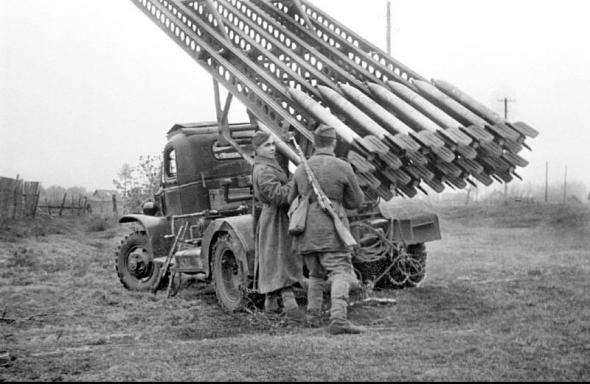
25 July 1941 with a battery of jet mortars consisting of three BM-13 combat vehicles (commander N.I. Denisenko) reinforced the grouping of Major General K. Rokossovsky, who was on the defensive in the Yartsevo direction. The batteries set the task of destroying German troops at a resistance node located four kilometers west of Yartsev. Already in the evening a salvo of rockets was fired. Generals K.K. Rokossovsky and V.I. The Cossacks, who were present at the same time, noted its high performance.
In the evening of July 27, a battery of jet mortars (commander PN Degtyarev) came out from Moscow near Leningrad, which consisted of BM-4 combat installations 13. She followed her own course and in 21 h 30 mines arrived in Krasnogvardeisk. July 31 Lieutenant P.N. Degtyarev and a military engineer, DA, who accompanied the battery. Shitov were summoned to K.E. Voroshilov. During the conversation, which lasted about an hour, the battery was given specific tasks: to prepare personnel and property for combat operations for 3 days, to assist Leningrad factories in establishing ammunition production for rocket launchers.
On August 1, a battery of jet installations arrived at the disposal of the Reserve Front from Moscow (four BM-13). The commander of the battery was Senior Lieutenant Denisov. 6 August with 17 h 30 min to 18 h battery produced three volleys in the offensive zone of the 53 th rifle division, which made it possible for parts of the division to seize the enemy stronghold almost without loss.
Until mid-August, 1941 had sent three more rocket batteries, commanded by NF, to the Western and Reserve fronts. Dyatchenko, E. Cherkasov and V.A. Kuybyshev, and the South-West - battery TN Nebozhenko.
6 September is the tenth rocket mortar battery commanded by V.A. Smirnova arrived on the Western Front. On September 17, a separate Guards Mortar Division (GMD) was deployed at its base, which also included batteries under the command of Flerov and Cherkasov.
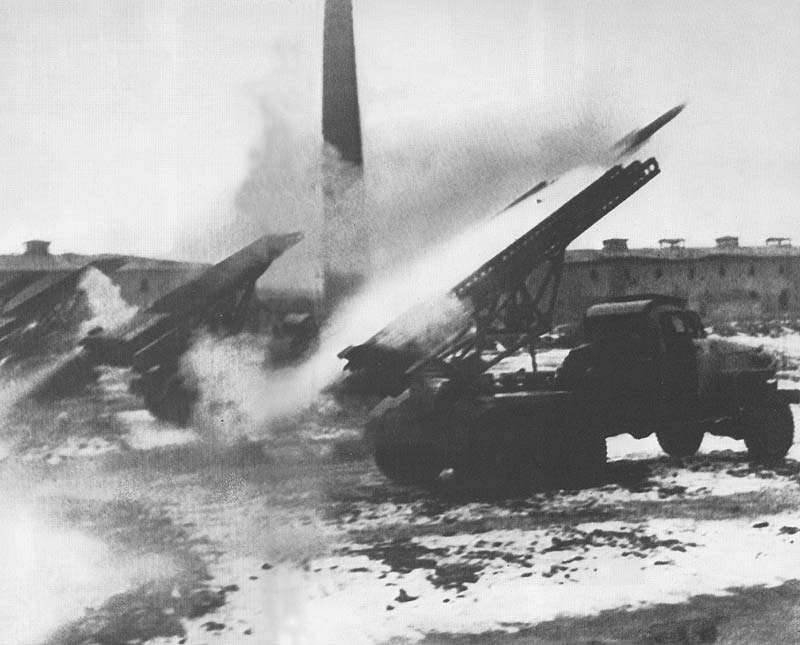
The fate of the first Soviet rocket artillery batteries is different. The batteries of Flerov, Cherkasov, Smirnov died on the Smolensk land, the batteries of Dyatchenko, Denisov and Kuhn - in the battles near Moscow. Batteries N.I. Denisenko and V.A. Kuibyshev continued to successfully fight on the Western Front. Somewhat later, they were reformed into separate Guards mortar battalions. Battery P.N. Degtyareva, who fought near Leningrad, in the early autumn of 1941, was deployed in a separate GMD, becoming the basis, formed in November, of a separate Guards mortar regiment (GMP) of the Leningrad Front (commander Major I.A. Potiforov). From 28 February 1942, he became known as the 38-m Guards Mortar Regiment. Battery of jet installations TN Nebozhenko after the Kiev defensive operation was deployed in a separate Guards mortar division, which proved itself well in the battles for Odessa and Sevastopol.
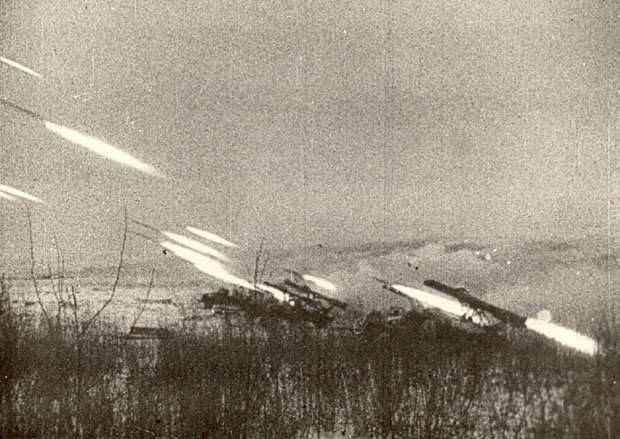
By the fall of 1941, the serial production of PCs and combat installations for them had increased significantly. Through the efforts of designers, engineering personnel and workers, BM-13 combat vehicles were modernized in a short time and rocket launchers for firing 82 mm RS-s were developed, mounted on ZIS-6 (36-charge) vehicles and light tanks T-60 (24-shooter).
The Supreme Command headquarters controlled the progress in the production of new weapons and the combat use of the first units of rocket artillery. I.V. Stalin was presented with the results of their use in battle and the proposal to create regiments armed with rocket launchers.
In August 1941 of the year came the order of the Supreme Command Headquarters to start forming the first 8 regiments of rocket artillery, equipped with BM-13 and BM-8 combat vehicles. Each regiment consisted of three fire battalions of a three-battery (4 combat units in batteries), anti-aircraft and park battalions. All formed regiments were given the rank of Guards, and they began to be called “Guards mortar regiments of the Supreme Command Headquarters”. This emphasized the special significance of the new weapon, the subordination of the regiments to the Supreme Command Headquarters, and the responsibility for recruiting. By the end of September, 9 rocket artillery regiments acted on the fronts, and the 9 regiment was formed over the plan on the initiative and at the expense of the staff of the USSR Mortar Armament.
Regiments of rocket artillery continued to be created during October. On the Western Front, 10, 11, 12, 13 and 14 Guards regiments of rocket artillery were formed. The first regiments in the difficult conditions of 1941, were able to successfully fight the enemy. Their personnel demonstrated a high ability to use new weapons. At the same time, combat use during the 1941 summer-autumn campaign revealed the fact that it was not always possible to use the shelves centrally. Of the established regiments, only four (2, 4, 6 and 8) acted compactly, the rest fought in a sub-divisional, on isolated areas of the front. During the period of intense defensive battles with the enemy, having superior strength, with a small number of units equipped with new weapons, it was noted that it was more profitable to use rocket artillery - dispersed, directing separate divisions to the most difficult sectors of the front, to provide fire support to infantry divisions.
As a result, since October 1941, at the suggestion of the Western Front Command, the formation of separate rocket artillery battalions began, and the formation of mortar regiments was suspended. Until 12, December 1941 formed 28 separate divisions of the two-battery (8 units in each battery). From the 14 first mortar regiments 9 reformed into separate Guards battalions of rocket artillery, two-battery.
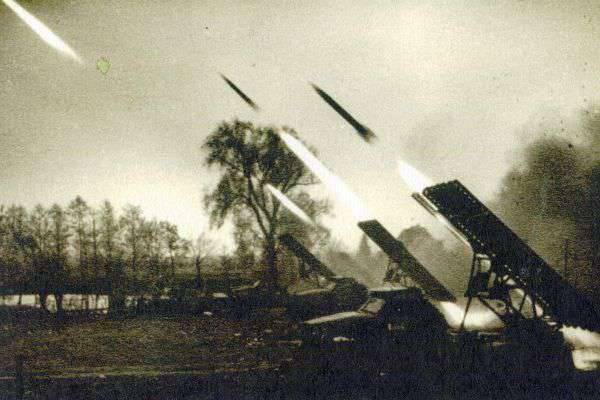
These activities allowed to increase the number of individual units, although the number of combat installations remained the same, and to provide support for rifle divisions in the main lines. By December 1941, the front had 8 rocket artillery regiments and 35 individual divisions. A single volley of their launchers was about 14 thous. Rockets.
8 September 1941 by the decision of the State Defense Committee established the central governing bodies of reactive artillery in the person of the commander, the military council (subordinate directly to the Supreme Command Headquarters), the headquarters and the Main Directorate of Armament of the Guards mortar units (GUV GMCh). Management of orders for the production of weapons, supplies and organization of repairs GUV GMC (the chief was a military engineer 1 rank N. N. Kuznetsov).
On the fronts, new command and control bodies were created on the fronts to provide guidance for combat activities and to ensure the supply of new missile units — the operational groups of the guards mortar units.
From autumn 1941 to November 1942, FGGGs were formed on all active fronts. In the period of the onset of the Soviet troops in the winter of 1941 / 42 of the year, regular army task forces began to be set up in armies where a large number of rocket artillery units were concentrated. So it was in the North-Western, Kalinin and Western fronts. However, the majority of army FG GMG was led, as a rule, by the commanders of the rocket artillery regiments supporting the actions of the military units of the army.
As you can see, in 1941, rocket artillery developed not only quantitatively, but also in organizational terms.
The most important factor that ensured the rapid development of a new type of weapon during the war years was the organizing activity of the State Defense Committee to create, master and expand the serial production of PCs, combat vehicles and launchers. At the T-bills, a special Council on jet weapons was organized. Production and supply activities of the Guards mortar units, as well as their formation and combat use were under the direct supervision and control of the Supreme Command Headquarters and the State Defense Committee. The best enterprises of the country were involved in the production of jet weapons. A lot of attention was paid personally to the development of this new type of weapon by I.V. Stalin.
The rapid development of reactive artillery was largely due to its combat properties, which met the requirements of highly maneuverable operations during the initial period of the war, as well as the simplicity of the designs of military installations, low consumption of non-ferrous metals and other scarce materials for its production.
An important role was played by rocket artillery during the defense of Moscow, its main forces were concentrated. The front command and army commanders skillfully enough used the high maneuverability and firing characteristics of a new type of weapon, for the sudden launch of powerful fire strikes against the enemy troops wedged in. Guards mortar battalions covered all major highways leading to the capital, ensured the application of counter-attacks and counterattacks. Acting in a broad band, they were used where the enemy posed the greatest threat. Fire strikes of rockets not only caused serious damage to enemy troops, but also produced a strong moral impact on them.
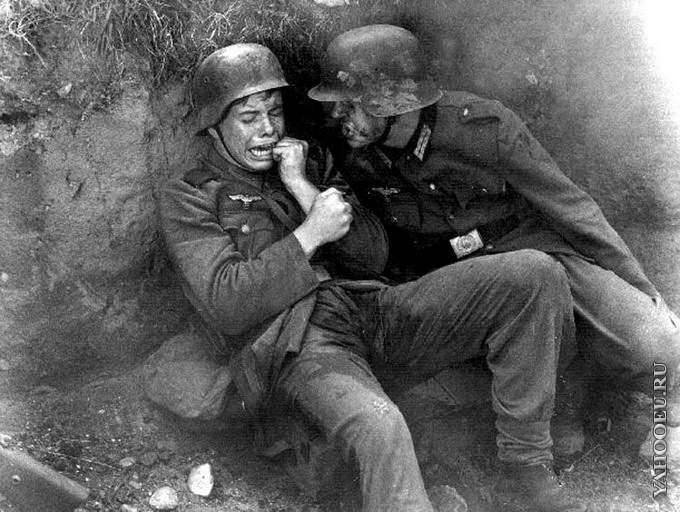
After the start of the counteroffensive near Moscow, the guards mortar divisions were used most effectively in the depths of the fascist defense. While advancing in the combat first echelons, they ensured the breakthrough of the enemy’s defenses at intermediate lines, and also reflected his counterattacks.
In 1942, due to increased production and economic opportunities, the formation of units and subunits of rocket artillery took place on an even larger scale.
In connection with the beginning of the general Soviet offensive and the requirements of the Supreme Command Headquarters, massive use of artillery on the main axes, it became necessary to introduce organizational changes in rocket artillery. Meanwhile, there were known difficulties in managing a large number of divisions in combat. Therefore, in January 1942, under the order of the State Defense Committee, the mass formation of regiments of jet artillery of the new organization was started. At the same time, separate divisions began to unite into regiments (three fire divisions of a two-battery contingent). In the battery, as before, there were 4 installations BM-13 or BM-8. Thus, the salvo of the BM-13 regiment was 384 projectile, and the regiment of the BM-8 - 864. The regiment divisions had their own logistic agencies and could act independently.
The first regiments of the new organization were the 18 and 19 of the Guards mortar regiments. By the middle of the spring, 1942 had formed the 32 regiment and several separate divisions. In this case, 21, 23, 36 and 40-th Guards mortar regiments were created by combining separate battalions located in the North-West, Volkhov and Kalinin fronts. Two regiments from the newly created (32 and 33) were transferred to the Far East.
The combat experience gained during the 1941 / 42 winter offensive showed that new tasks had appeared in front of the rocket artillery units. Now, targets for the firing of rocket launchers were not only living force with military equipment, but also fortifications at the lines of attack. For the breakthrough of the enemy’s equipped defenses, for example, a more powerful and heavy missile capable of destroying fortifications was needed.
By the summer of 1942, Soviet designers had developed two high-explosive rockets: M-20 (caliber 132 mm, longest range 5 km, explosive charge weight 18,4 kg) and M-30 (caliber 300 mm, maximum range 2,8 km, explosive charge weight 28,9 kg ). M-20 shells were fired mainly from the BM-13 rocket launchers, and M-30 shells from specially designed frame-type machines. The Soviet troops received a simple, inexpensive, but powerful tool for breaking through the enemy's positional defense.
4 June 1942 of the State Defense Committee announced the creation of heavy rocket artillery units, which obliged the military council of the GMC to form 30 separate divisions armed with M-30 units in the shortest possible time. The heavy rocket artillery division was of three batteries, each battery had a 32 launcher (frame). They were installed RS M-30 (four per installation). The division had 96 launchers, and its salvo was a 384 projectile. July 1 completed the formation of the first heavy jet divisions (from 65-th to 72-th), which were combined into 68-th and 69-th Guards mortar regiments and sent to the Western Front. The regiments had no means of reconnaissance, communications, and a sufficient number of vehicles. On July 3, on the Volkhov front, the 77 th regiment departed, and the 8 th to the Northwest — 81 th and 82 th regiments.
The baptism of the battalion of heavy rocket artillery took 5 on July 1942 of the year on the Western Front, on the site of the offensive of the 61 Army. On the German centers of resistance, located in Anino and Upper Doltsy (near the town of Beleva), powerful fire strikes were inflicted. As a result, both fortified points were destroyed and our troops were able to occupy them practically, without encountering German resistance. Until mid-July, the 68 army continued to support the 69 and 61 regiments and fired 4 regimental volleys and another 7 divisional, using the X-NUMX M-3469 projectiles.
After the successful combat use of the first heavy battalions, their forced formation began. Already by August 20 80 M-30 divisions were formed, of which 74 were on the fronts.
The results of the heavy battalions of the M-30 were highly appreciated by both artillery and all-arms commanders. At the same time, the shortcomings of the organization of the first units of heavy rocket artillery were revealed in combat practice. Due to the large number of frames (96) in the division, it was difficult to choose and equip firing positions. Difficulties arose when bringing ammunition, since division vehicles could only raise half of a divisional salvo in one flight.
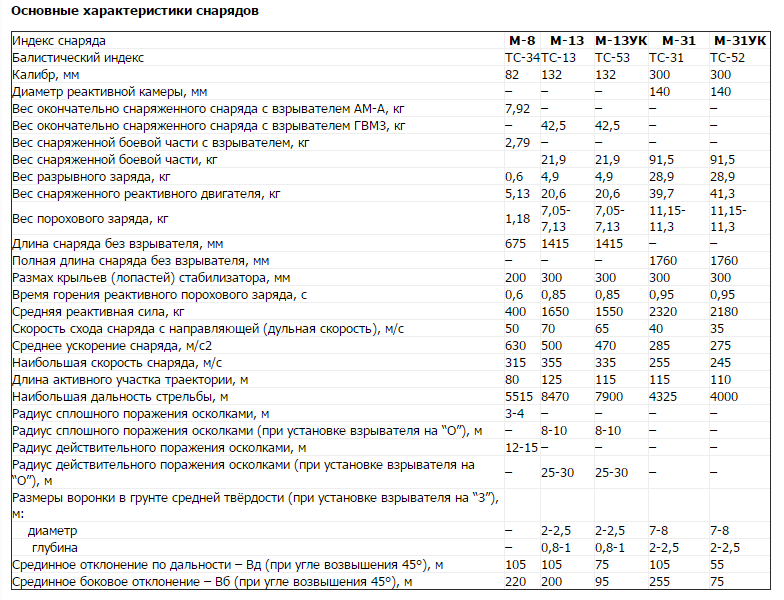
The above, as well as the impossibility at that time to satisfy the needs of the M-30 regiments in reconnaissance, communications and motor vehicles, was abandoned by the regimental organization of heavy rocket artillery. The first five regiments of M-30 were disbanded, and their divisions became independent. In the future, individual M-30 divisions began to be formed according to a changed state (two batteries for 48 frames in each).
Simultaneously with the development of units with M-30 systems, in 1942, rapid growth continued in the Guards mortar regiments that had BM-13 and BM-8 installations.
In the autumn of 1942, in the Caucasus, miner combat installations for the RS M-8 began to be created. From September to October 1942 of the 58 mountain range was built, on the basis of which 12 of miner-cell batteries were formed, four units in each. To protect the coast, mountain combat installations began to be installed on railcars and boats.
In the summer of 1942, the bitter struggle turned south-westward. The main event of this period was the battle of Stalingrad. The active role in it was also played by rocket artillery, which was one of the most effective means of the Supreme Command Headquarters Reserve.
During the defensive battles at Stalingrad, a significant number of rocket artillery units were involved, almost three times as many as they were near Moscow. Unlike the battles near Moscow, rocket artillery units near Stalingrad usually operated in full force. The regimental commanders had the opportunity to continuously lead the battles of the divisions and to use their full maneuverability and fire capabilities. Depending on the importance of the defended areas, the regiment supported from one to three rifle divisions. The divisions, leading the fighting in the main areas, reinforced 1-2 Guards mortar regiments. The army commander usually had a division or regiment of jet artillery in his reserve.
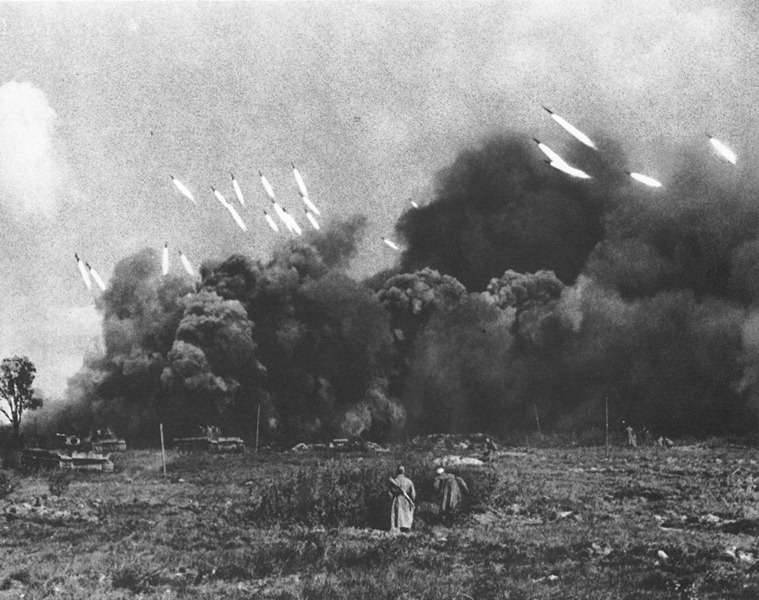
Guards mortar regiments took part in all stages of a defensive battle: they ensured military operations of forward detachments on the distant approaches to the city; destroyed the enemy troops in the areas of concentration and on the march; participated in repelling infantry attacks and armored vehicles on defensive lines around Stalingrad; carried out support of counterattacks and counterattacks of our troops. For the first time, rocket launchers were used in combat operations inside a large city.
To control parts of the reactive systems and provide them with everything necessary, two operational groups of the GMC were created at the Stalingrad and Donskoy fronts. They were headed by General A.D. Zubanov and Colonel I.A. Shamshin. The participation of rocket artillery in the defense of Stalingrad can be traced by the example of the fighting of the 83 Guards mortar regiment of Lieutenant Colonel K.T. Golubeva.
The regiment was armed with BM-8 rocket launchers mounted on T-60 tanks. Part of it arrived at the Stalingrad front at the time of its creation and entered into battle even on the distant approaches to the city, in the area of Chernyshevskaya. The regiment supported the military operations of the 33 th detachment of the Guards Rifle Division, and later covered its divisions with army fire behind the Don, ensuring a counterattack with 1 tank army units west of Kalach. During the defense, the regiment participated in repelling the enemy’s massive attacks on the outer and inner contours of the city, often resorted to shooting from open firing positions, and fought surrounded by Peskovatka and Vertyachy. But the special difficulties of the soldiers of the regiment fell, with the beginning of fierce fighting in the city, reaching the melee. The guardsmen of the 83 regiment, together with the soldiers of the 62 army, had to repel enemy attacks repeatedly in hand-to-hand combat, to take their military equipment to a safe place under machine-gun fire. And they passed through all the tests with honor and rendered great help to the infantry in keeping the right bank of the Volga. The regiment divisions supported the fighting of renowned 13 and 37 Guards, 284 and 308 rifle divisions in the city center, near the railway station and the main ferry, were defended by the Red October, Barrikady and STZ factories, fought on Mamayev Kurgan.
The most distinguished in the defensive battles of the rocket artillery guard units were awarded government awards. Among them: 2 (commander Col. I.S. Yufa), 4 (Col. N.V. Vorob'ev), 5 (Col. L.3, Parnovsky), 18 (Lieutenant Colonel T.F. Chernyak), 19 (Lieutenant Colonel AI Erokhin), 93 (Lieutenant Colonel KG Serdobolsky), Guards mortar regiments.
The first period of the Great Patriotic War turned out to be the period of the greatest quantitative growth of rocket artillery. In the middle of November, 1942, more than 70% of the total number of battalions in the rocket artillery at the end of the war were in service. At the same time, along with the quantitative growth of the Guards mortar units, their qualitative composition was improved. Thus, from the 365 divisions that existed at the end of the first period, 23% were heavy divisions, 56% were divisions BM-13 and only 21% divisions BM-8.
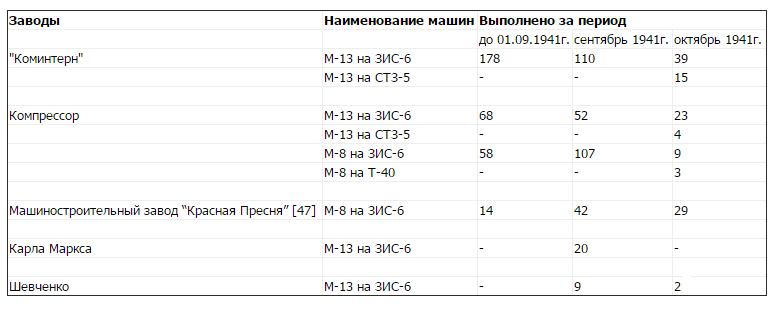
In the same period, a great deal of experience was gained in the use of jet systems in all types of combat operations, which showed the expediency of the massive use of rocket artillery. By the beginning of the counterattack of our troops at Stalingrad, the rocket artillery was a fairly developed type of Soviet artillery, possessing great firepower and high maneuverability.
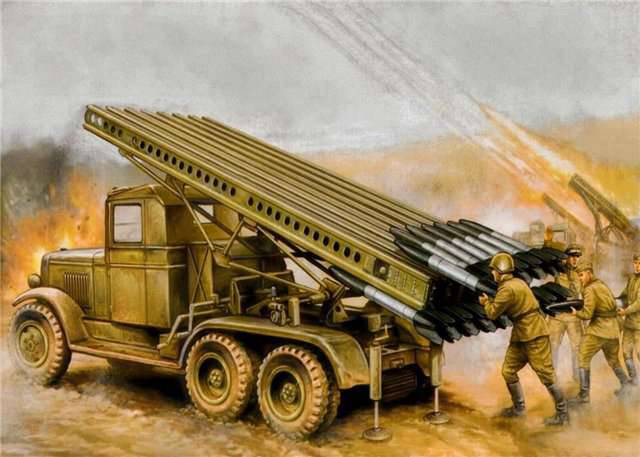
Sources:
Asheulov O. Development of the Guards mortar units in the first period of the Great Patriotic War (June 1941 - November 1942) // Homeland. 2015. No.515 (5). C.118-122.
Koroteev A., Gafarov A. Rocket weapon of victory // Flight. 2010. No.5. C. 39-45.
Degtyarev P. Formation and development of rocket artillery in the first period of the war // Militaryhistorical magazine. 1975. No. 1. S.77-81.
Vasilyev A., Mikhailov V. Rocket launchers in the Great Patriotic War. M .: Science, 1991. C.16-20.
Kuznetsov K. History of missile weapons and their combat use. M .: Military Publishing. 1972. C.118-124.
Information